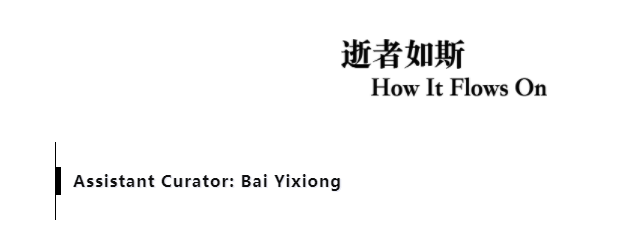

The narrative, wordplay and rhythmic variations of hip-hop which have always been the focus of the genre have recently given way to the dominating effect of the triplet, grabbing ones’ ears in mere seconds. To tell an intriguing story or to demonstrate production skills seem irrelevant compared to the capacity for stardom. How to attract the most likes in the shortest period is now a primary focus for music in a digital age thanks to the limit on length published by social media platforms and the quickly popularizing form of short mobile videos. The now worshipped three-second golden rule restricts the true content within the initial three seconds, thus making the fleeting three seconds the true value of a piece. Commercial music production no longer relies on compressing one’s past accumulation into any three seconds, but to define an entire piece by them.
Sound extends itself as a media; its wavelength may infinitely expand within a suitable condition to our auditory sense. The increasingly brief and simple rhythm and melody enlarges the instant shock while diminishing the vibration that follows. The impact it makes on people lies ultimately within that instant.

Although such was an experience extracted from my recent personal music choice, this sense of fragmented and instant impact is indeed evident from the demos we hear from music platforms and the fifteen-second short videos we see from our social circles; Any question, complicated or simple, can be found explained within a five-minute long video online; Summaries is always there online for articles; A search with a hundred thousand of entries often takes less than a second. Printed words diminished the spatial restriction on the spread of information, and the internet further erased the time spent on displacement. Communication and the sharing of information is indeed convenient and speedy in this digital era, yet the operation of the high-speed network also resulted in the rapid iterations of information. The lifespan of an update is now measured by minutes instead of days, and a trend may die down in a week. Only the present is allowed to be preserved at the price of casting the past and the obsolete to the flow of time. Your favorite restaurant printing a different menu from last week; a store removing the trending jacket you bought online from its racks before it even arrives at your house; the world is changing fast and we are picking up the pace with it, while leaving less and less time for understanding and thinking. We seek the truth of the world through the pop-up windows constantly refreshing, but what we eventually find is only us in the state of seeking.
Our observing the world and exposing ourselves to it happen simultaneously. We publish sections of our life’s trajectory in the form of photos and videos. The instants, deliberately picked and furnished by our own hands, are stitched to be us as the spectacle, yet the actual living entity is known only to our own minds. The array of flattened extraordinary facades, either of pleasure, of pain, of perplexity or of pride, conceals the inward ordinary. Such ordinary is constant. Life as it is constant and continuous appears dull and redundant compared to the sudden bursts of ecstasy. Some refuse to let the trivial life year after year define their truth, believing their essences lie bare under the spotlight of the internet; some are indifferent towards the misalignment, some are puzzled by it, and some are ignorant to it. Inevitably our contact with the digital will grow, filling our reception and production with fragmented information. Our half within the digital soil, the self as the spectacle, will become more important until the sections of truth become the truth itself. Then our lives will be defined no more by the accumulation of thought and action, instead by the momentary display of living.
Everything is confounded with every flash of the screen, both the truth and the false, the narrative and the figure. The world accelerates in the same way as the flash, until all is done at the flick of the algorithm. All is evident, all is complete through the abyssal slab within our hands, all in a mere instant.
As the temporal experience has been fractured, it no longer flows in unity, retaining neither its ferocity nor gentleness. “How it flows on, never ceasing, night and day.” Such exclamations are now obsolete. The Riverside Passage spurred from ruins, born from the traces of time, observing from the bank of Huangpu river the night and day passing as the water flows; while APSMUSEUM stands firmly amidst the bustling crowd, surrounded by the traffic of commerce. Between the immersive exchange between the two sites, temporal context and architectural space resonates beyond their own space-time, and reaches a deliberate balance among the temporal, spatial, social and cultural elements in How It Flows On as a unified whole with the aid of music and image, stimulating a sincere experience in its immersed participants.

Yixiong Bai, current undergraduate student at Rhode Island School of Design majoring in Interior Architecture, focusing on interior studies and adaptive reuse.